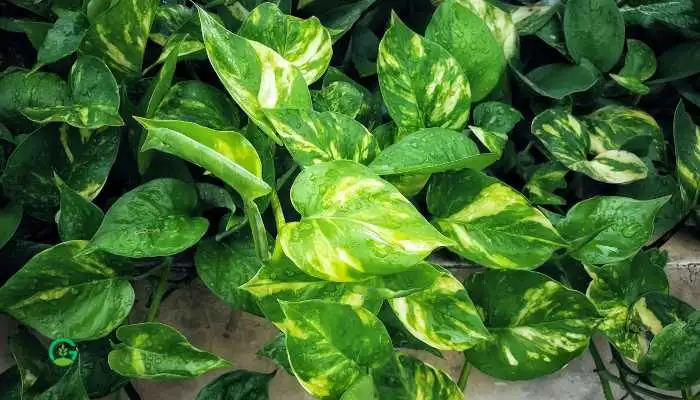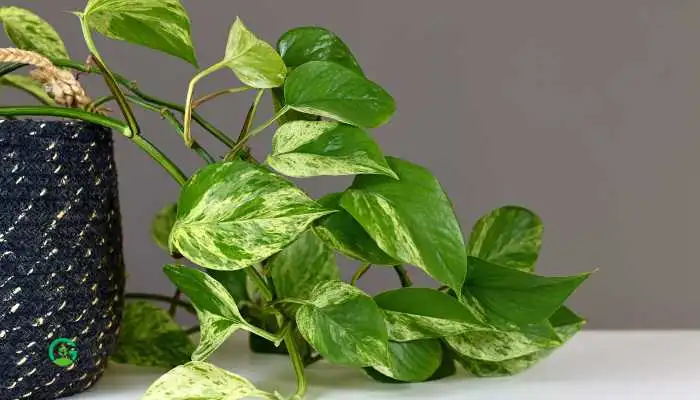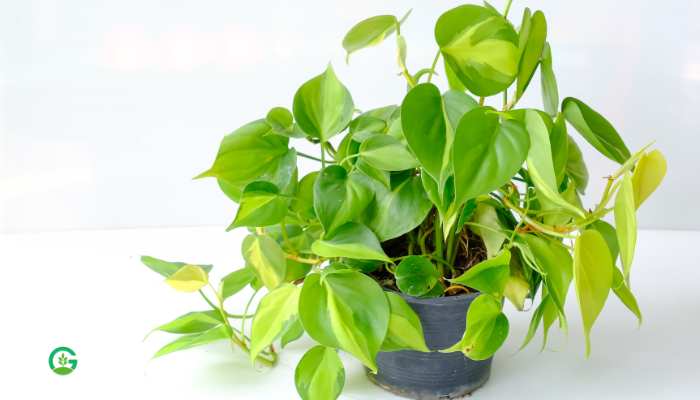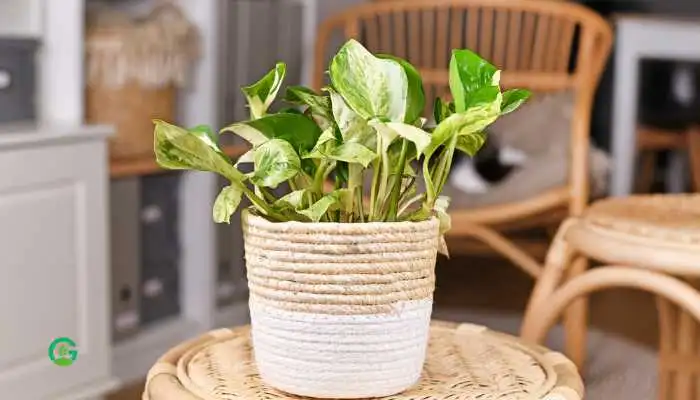Introduction
Are you looking for a low-maintenance, beautiful houseplant to brighten up your space? Look no further than the Jessenia Pothos.
This stunning plant, known for its vibrant green and yellow variegated leaves, is perfect for both novice and experienced plant enthusiasts.
In this article, we’ll explore everything you need to know about Jessenia Pothos, from its origins to care tips, and even how to propagate it. Ready to dive in?
Jessenia Pothos Table of Contents
What is Jessenia Pothos?
The Jessenia Pothos (Epipremnum aureum ‘Jessenia’) is a variety of the popular pothos plant, known for its easy care and stunning appearance. Unlike the common pothos, Jessenia features striking green leaves with beautiful yellow variegation, making it a standout addition to any plant collection.

Origins and History
Jessenia Pothos is a relatively new cultivar in the plant world. It was developed as part of the broader family of pothos plants, which originate from the Solomon Islands in the South Pacific. The plant has gained popularity for its unique variegation and hardy nature, making it a favorite among houseplant enthusiasts.
Characteristics
What sets the Jessenia Pothos apart from other pothos varieties? Its leaves are heart-shaped and feature a mix of light and dark green hues with striking yellow marbling. This plant can grow long, trailing vines, making it ideal for hanging baskets or as a climbing plant on a trellis.

Ideal Growing Conditions
To keep your Jessenia Pothos thriving, it’s important to mimic its natural habitat. Here’s a quick guide to the ideal growing conditions:
Temperature and Humidity
Jessenia Pothos prefers temperatures between 60-85°F (15-29°C) and thrives in high humidity. However, it can adapt to average household humidity levels.
Watering Needs
When it comes to watering your Jessenia Pothos, less is more. This plant prefers its soil to dry out between waterings. Overwatering can lead to root rot, so it’s crucial to ensure the pot has good drainage.
Light Requirements
Jessenia Pothos thrives in bright, indirect light. Too much direct sunlight can scorch its leaves, while too little light can cause the variegation to fade. A spot near a window with filtered light is perfect.
Soil Preferences
Well-draining soil is key for Jessenia Pothos. A standard potting mix with added perlite or sand will ensure good drainage and prevent waterlogged roots.
Fertilization
Fertilizing your Jessenia Pothos every 4-6 weeks during the growing season (spring and summer) can promote healthy growth. Use a balanced, water-soluble fertilizer diluted to half strength.
Pruning and Maintenance
Regular pruning helps keep your Jessenia Pothos looking its best. Trim any dead or yellowing leaves, and cut back long vines to encourage bushier growth. Always use clean, sharp scissors to avoid damaging the plant.

Propagation Techniques
Propagating Jessenia Pothos is a fun and rewarding process. Here’s how you can do it:
Stem Cuttings
- Choose a healthy vine with several leaves.
- Cut a 4-6 inch section just below a node (where the leaf meets the stem).
- Place the cutting in water or a moist potting mix.
- Wait for roots to develop, then transplant to a pot.
Air Layering
- Select a vine and make a small cut on the stem.
- Wrap the cut area with moist sphagnum moss and plastic wrap.
- Wait for roots to form, then cut the rooted section and plant it.
Common Problems
Even with the best care, your Jessenia Pothos might encounter some issues. Here are common problems and how to solve them:
Yellow Leaves
This can indicate overwatering. Ensure the soil dries out between waterings and check for proper drainage.
Brown Tips
Usually a sign of low humidity or underwatering. Increase humidity and check your watering schedule.
Pale Leaves
If the leaves are losing their vibrant color, it could be due to insufficient light. Move the plant to a brighter spot.
Read More
Pest Control
Jessenia Pothos is generally pest-resistant, but it can occasionally attract pests like spider mites or mealybugs. Here’s how to handle them:
Spider Mites
Wipe the leaves with a damp cloth and increase humidity. For severe infestations, use an insecticidal soap.
Mealybugs
Remove them with a cotton swab dipped in rubbing alcohol. Regularly inspect your plant to catch infestations early.
Health Benefits
Not only is Jessenia Pothos a visual delight, but it also offers several health benefits:
Air Purification
Like other pothos varieties, Jessenia Pothos is known to purify the air by removing toxins such as formaldehyde and benzene.
Stress Reduction
Having greenery around can reduce stress and improve mental well-being. The vibrant, calming presence of Jessenia Pothos can enhance your living space.
Decorative Uses
Jessenia Pothos is incredibly versatile when it comes to decorating your home:
Hanging Baskets
Let the vines trail down from hanging baskets to create a lush, green cascade.
Climbing Plant
Train the vines to climb a trellis or moss pole for a striking vertical display.
Tabletop Decor
Place smaller pots on tables or shelves to add a touch of greenery to any room.
Conclusion
The Jessenia Pothos is a wonderful addition to any home. Its beautiful variegated leaves and easy-care nature make it a perfect choice for both beginners and experienced plant lovers. By following the care tips and propagation techniques outlined in this guide, you can enjoy a healthy and thriving Jessenia Pothos in your own space.
Jessenia Pothos FAQs
How often should I water my Jessenia Pothos?
Water your Jessenia Pothos when the top inch of soil feels dry. Overwatering can lead to root rot, so ensure the pot has good drainage.
Can Jessenia Pothos grow in low light?
While Jessenia Pothos can tolerate low light, its variegation may fade. It thrives best in bright, indirect light.
How do I propagate Jessenia Pothos?
You can propagate Jessenia Pothos through stem cuttings or air layering. Both methods are simple and effective.
Why are the leaves on my Jessenia Pothos turning yellow?
Yellow leaves can be a sign of overwatering. Make sure the soil dries out between waterings and check for proper drainage.
Is Jessenia Pothos toxic to pets?
Yes, like other pothos varieties, Jessenia Pothos is toxic to pets if ingested. Keep it out of reach of cats and dogs.
By understanding and implementing these care tips, you can ensure that your Jessenia Pothos remains a vibrant and healthy addition to your home. Happy planting!
















